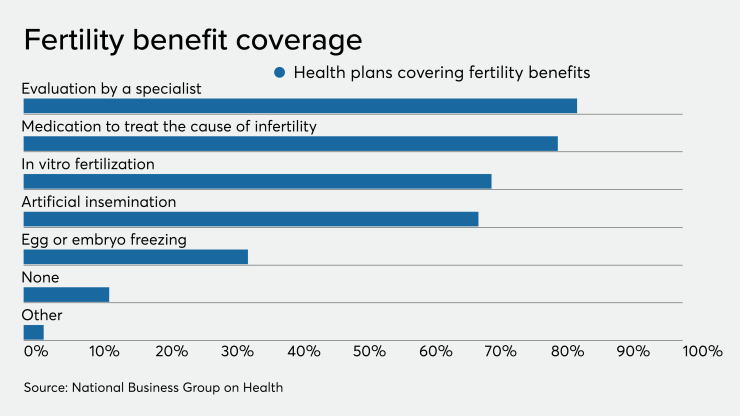When it comes to
Fertility benefits that include IVF treatments are offered by just 19% of employers, according to the Society for Human Resource Management. Benefits that include
Read More:
While those statistics offer insight into biological infertility among mostly white, cis-gender people, there are several other groups that are excluded from the discussion around fertility and fertility benefits.
“Fertility care is not just a women's health issue, it is a human healthcare issue,”says Dr. Raquel Hammonds, director of integrative and preventive medicine for
Read More:
In a recent one-on-one interview, Dr. Hammonds discussed creating concrete solutions for increasing inclusivity in fertility care and how employers can help shape opportunities for every path to parenthood.
How can employers make sure their fertility benefits are inclusive?
The first step to really tackling inequity is education. Oftentimes people just aren't educated about how certain providers may skew their level of care. What we really like to do is give people the information so that they have the agency to make an informed decision. Carrot can connect employees with over 2,000 reproductive endocrinologists and even mental health experts. But if you don't know that there's resources available, they can’t help.
Second is inclusion and linking people to providers that share their lived experience. It’s not enough to read about LGBTQ+ care in a textbook and think that now you have all the information you need to know about their care.
Sometimes it really takes being connected with people that share your gender identity, share your sex and understand what it means to undergo single parent family building. This is huge, especially when it comes to being inclusive of the BIPOC community. Research that showed 63% of 372 fertility clinics websites only featured pictures of white babies. People don’t realize that seeing things like that reflects back that no, this isn't for me, it's only for certain people.
Why do employers need to invest in fertility care benefits?
As an employer, the way to attract and retain top talent is to become more aware of different races, ages and genders, and not exclude them from the conversation. The best way to do that is to create a more inclusive benefit.
Our mission is to really make family forming more accessible, regardless of your age, race, sex and even your geography. The biggest thing is helping employers understand that it’s a much bigger issue than just helping an employee get pregnant for this moment in time. It’s really understanding that you're investing in your employees’ future.






